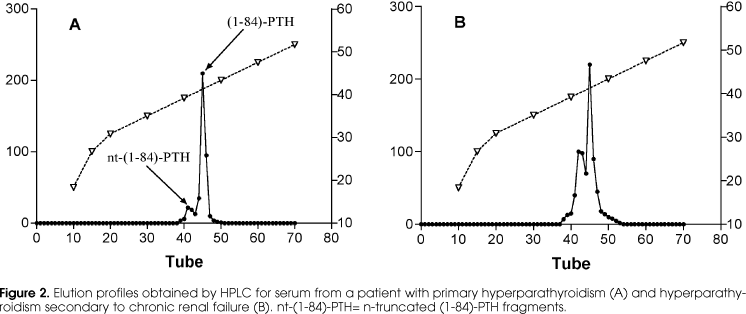PTH metabolism is complex and the circulating forms include the intact 1-84 molecule as well as several carboxyl-terminal fragments. The first generation of PTH assays included several types of competitive assays, with specificities that spanned carboxyl, mid-region and amino-terminal portions of the molecule. The limitations of these assays and the methodological evolution led to the description of 2nd generation non-competitive immunometric assays for PTH in the late 80's, based on the recognition of the PTH molecule by two different antibodies, one directed against de amino-terminal and other against the carboxyl-terminal segments. The observation that in some circumstances "long" carboxyl-terminal segments were also measured by 2nd generation assays led to the development of 3rd generation assays based on amino-terminal specific antibodies that are specific for the first amino acids, measuring only the molecular forms that activate PTH1R. The practical and cost-benefit advantages of these assays are still debatable. The recent observation that carboxyl-terminal fragments of PTH have biological activity via a distinct receptor than PTH1R, points to the future need of more than one assay in order to evaluate parathyroid hormone function.
Parathyroid hormone assay; Radioimmunoassay; Immunometric assays; Circulating forms of parathyroid hormone



